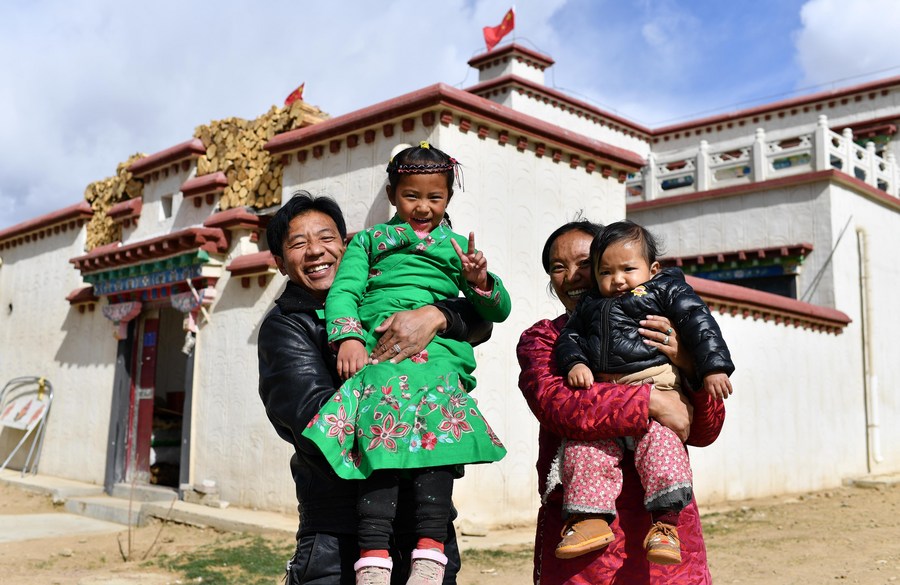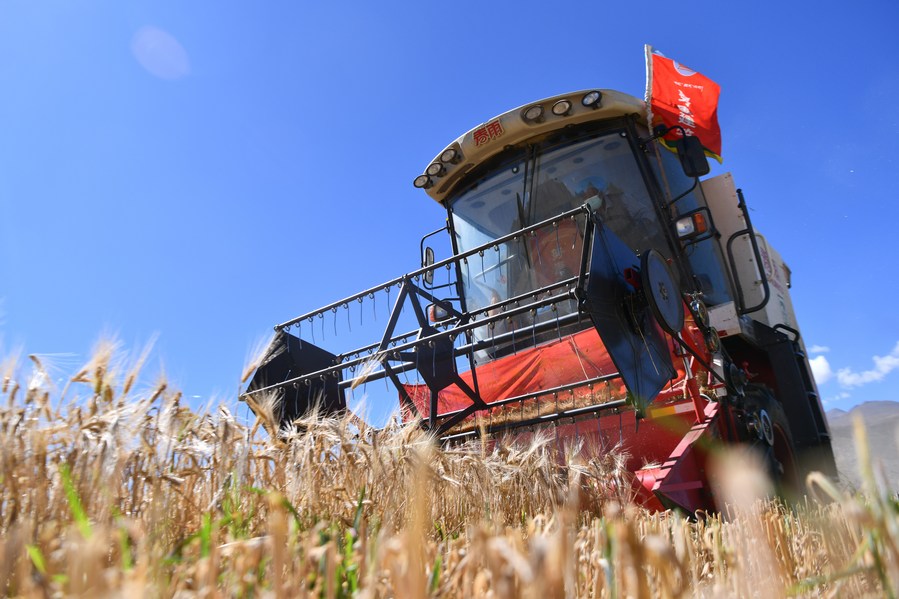

IMPROVED WELL-BEING
Improved transportation network has rendered a further boost to tourism in the region. Rural Tibet attracted more than 12.7 million tourists last year, generating about 1.6 billion yuan in tourism revenue and creating 64,500 jobs for farmers and herders.
In Tashi Chodan, a community in the Nedong District of Shannan, known for its Tibetan opera, some 30 artists perform regularly for tourist groups.
Dawa Drolma, 52, one of the performers, said they have shows every night during the peak season.
Dawa Drolma and her family have also refurbished their house into a homestay with six beds. "During the busiest time, all rooms are full," she said, adding that the opera performance and homestay business bring the family an extra income of more than 50,000 yuan every year.
Located in a deep valley in the Himalayas, Medog County is besieged by high hills and primitive forests. For centuries, porters were the major transportation means for the county.
The situation significantly changed following the start of the operation of the Medog Highway in October 2013, with vehicles and machines flowing in. Children can now go to school by vehicle, and, whenever needed, patients can be transferred to the city hospital quickly, sometimes by ambulance. Porters are no longer needed.
Thanks to the country's pairing-up assistance mechanism, by the end of June, seven batches of more than 1,300 medical professionals nationwide have trained more than 2,400 local doctors of different levels for Tibet. At the same time, hospitals in Tibet sent 1,800 local medical personnel to their pairing-up provinces and municipalities for further study.
By the end of 2021, more than 400 serious diseases could be treated without leaving Tibet, and more than 2,400 moderate diseases could be treated without the patients having to leave their cities. Moreover, the average life expectancy in Tibet rose from 68.2 years in 2015 to 72.19 years.
RURAL REVITALIZATION
Improved transport facilities, telecommunications networks and courier service coverage have contributed to e-commerce development in the region, with online shops and consumption surging rapidly. Local specialties are sold to other parts of China via online e-commerce platforms.
At a workshop in Chagyab County, more than 30 artisans were busy producing goldware and silverware, and their creations, such as pagodas and vases, were placed next to them.

Maidoi Village in Chagyab County has a long history of manually processing goldware and silverware, and the craftsmanship has been included in the region's intangible cultural heritage list.
Tengpa Doje, an inheritor of the craft, said villagers earlier processed gold and silver at home with low efficiency and poor product quality.
"Thanks to the workshop, we can now sit together and discuss challenges we are facing, and pool wisdom to attract young artisans and consumers with our products," he said.
The workshop is part of the county's ethnic handicraft industrial park, which was established in October 2018 with a total investment of about 27.2 million yuan. The park, featuring Tibetan cultural handicrafts such as thangka painting, and goldware and silverware processing, has helped boost the income of local residents.
Sherab Doje, a local villager, joined the workshop three years ago. "I have learned how to make ethnic accessories, earning some 4,000 yuan a month," Sherab Doje said.